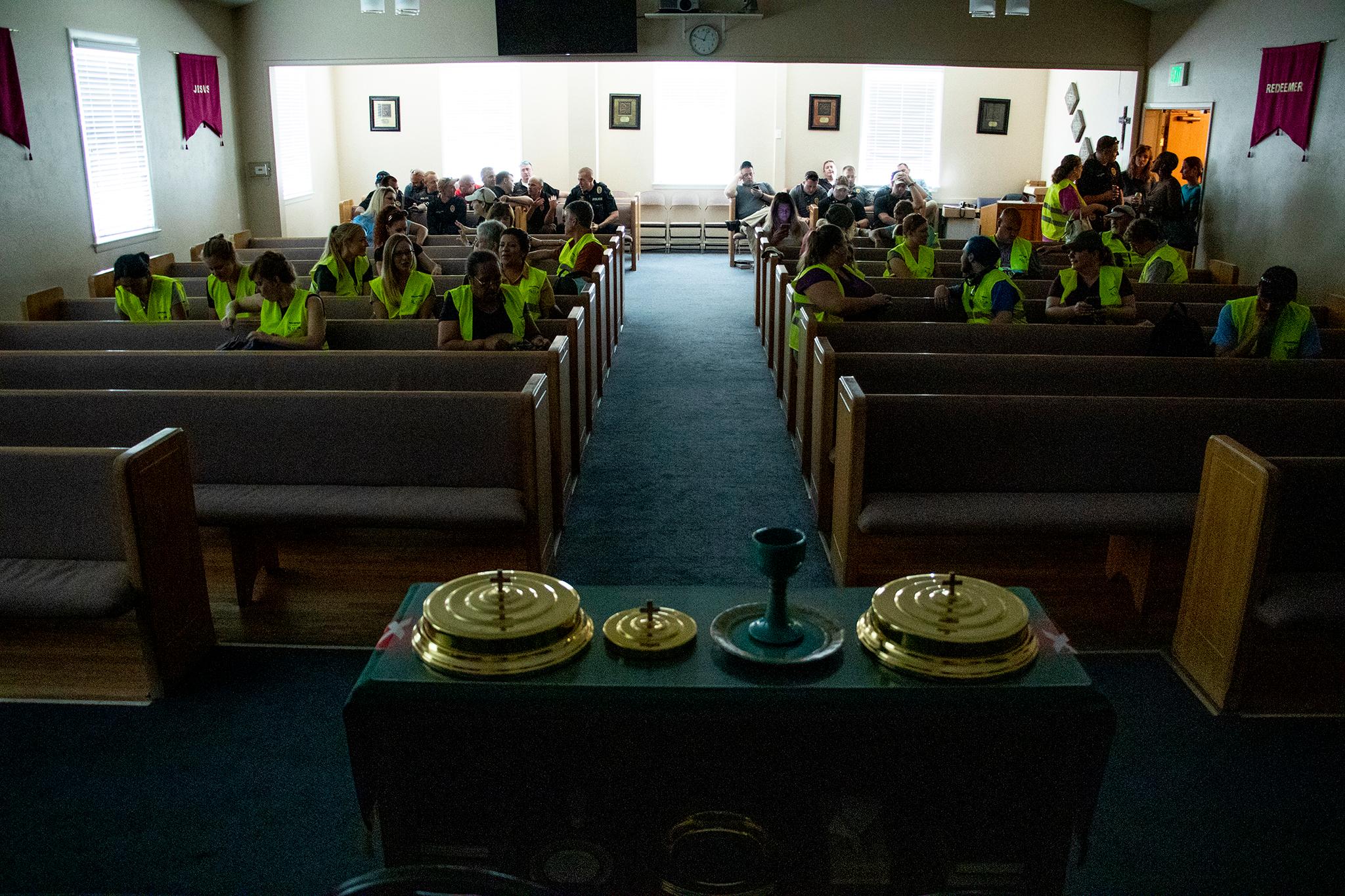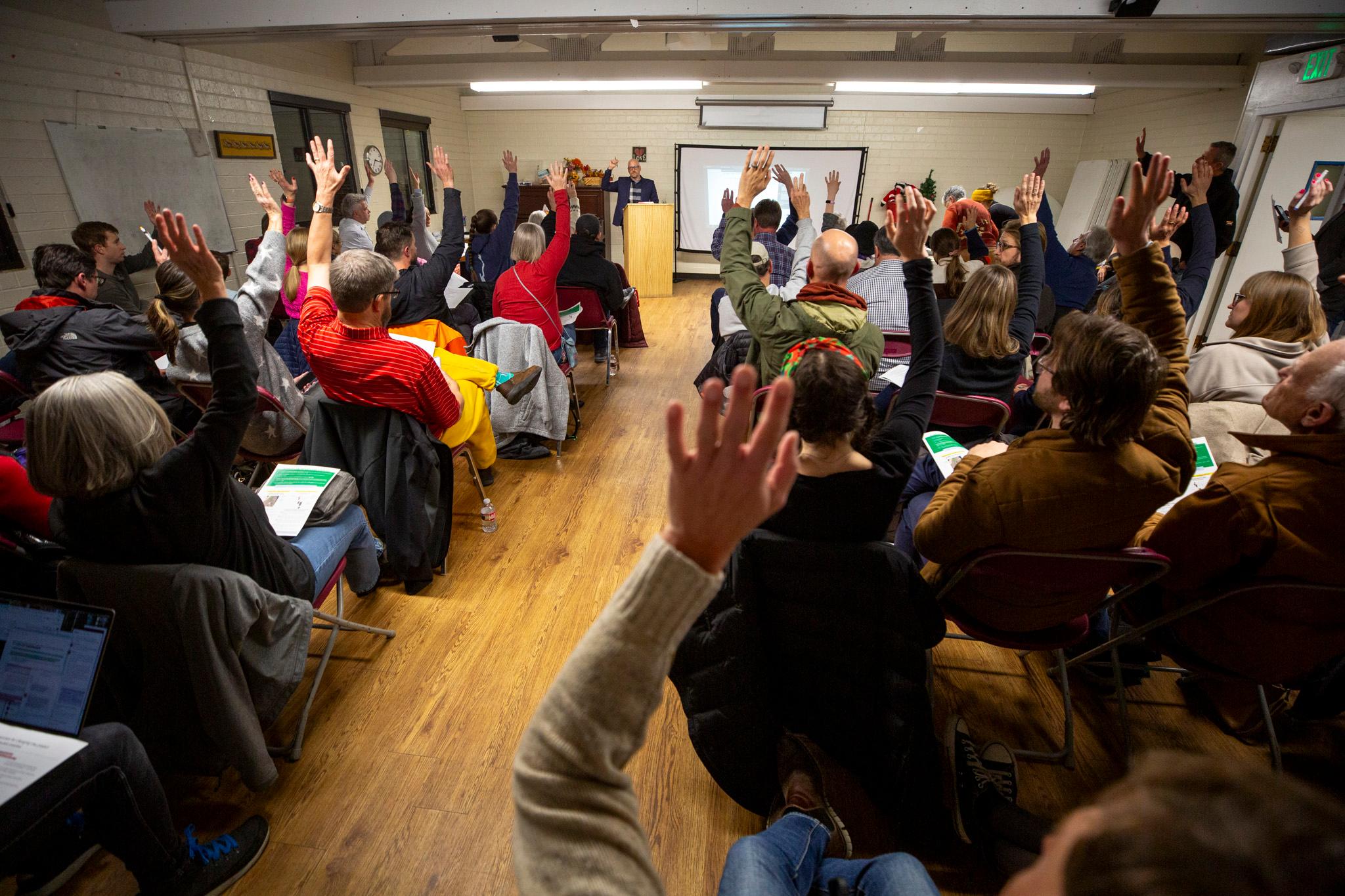Local government workers including law enforcement; shelter staff and other service providers; and volunteers spent a month this summer questioning people experiencing homelessness just south and west of Denver.
The answers they gathered could help Jefferson County shape its response to homelessness. A report will be released in March describing who is unhoused or on the verge of losing housing and what they said about the kinds of food, employment or other services that are helpful.
Lessons from the summer helped Jefferson County prepare for the annual one-day count that begins at sundown Monday across metro Denver and ends at sundown on Tuesday.
Cities and towns across the country conduct the one-day count, known as the Point in Time, in January. While it can't tell as nuanced a story as the comprehensive count that Jefferson County undertook for the first time last summer, the Point in Time provides data that can be compared to more than a decade of counts and to other communities nationwide. It helps identify trends and predict future needs.
The Denver area Point in Time is organized by the Metro Denver Homeless Initiative and covers the cities and counties of Denver and Broomfield, the city of Aurora and the counties of Adams, Arapahoe, Boulder, Douglas and Jefferson.
The U.S. Department of Housing and Urban Development requires that communities receiving federal money to help people experiencing homelessness conduct a Point in Time count of everyone in shelters and transitional housing each year at the end of January. A count of people experiencing homelessness who are not in shelters, a more difficult undertaking, is required every other year, though most communities do that annually alongside the shelter count.
Jefferson County's separate summer assessment required so much in terms of time, staff and money that it can't be replicated annually. Kate Skarbek, a senior management analyst for Westminster Parks, Recreation and Libraries, said the Jefferson County summer count that she helped organize might be repeated only every five years, or perhaps every other year.
Skarbek pointed to the logistical lessons of the Jefferson County summer count that are informing this year's Point in Time.
"What we really learned is the importance of timing," Skarbek said. "I think we knew, but it really drove it home."
For example, she said, Point in Time canvassers plan to show up at 5 a.m. Tuesday at sites where day laborers gather in Jefferson County. People experiencing homelessness often rely on day labor. If enumerators get to the gathering spots too late, they'll find the people they want to interview have already headed off to work.
During both the Point in Time and the Jefferson County count, people who agree to answer questions are offered something in return -- a supermarket gift card, a meal, clothing. Skarbek learned gift cards are preferred because people want to have choices. She also learned that the issuing stores need to be near the people who receive the cards.
Organizers kept in touch with volunteers who helped out over the summer, which has made it easier to recruit Point in Time canvassers. Jefferson County heads into the Point in Time with almost all its volunteer roster spots filled, said Kelli Barker, Jefferson County's regional homeless coordinator.
Cassie Ratliff directs homelessness programs for Family Tree, a nonprofit headquartered in Jefferson County that provides housing and other services to clients throughout metro Denver. Ratliff said that while service organization staff regularly take part in the Point in Time, recruiting additional volunteers can be difficult. Some people are uncomfortable seeking out people experiencing homelessness and interviewing them. During the summer, police officers accompanied canvassers. The officers won't be on hand this time, but volunteers learned last year that protection was not necessarily needed.
For Ratliff, the counts are "a great chance to talk to folks and see what they need."
"If the folks who need the services aren't at the table with us, it's not going to do much good."
Ratliff and some of her staff members helped survey during the Jefferson County summer count and signed up for similar work for Monday's and Tuesday's count.
During the month of the special Jefferson County count, staff at Family Tree and other service providers as well as at hospitals and schools conducted surveys with people who came in. In addition, for a week canvassers went to people experiencing homelessness, fanning out with the survey to hotels, mall parking lots, mountain parks, along drainage ditches and scenic creeks, on street corners and in libraries.
In addition to a more thorough count than can be done one a day, Jefferson County used a broader definition of homelessness than HUD requires.
According to the strict HUD definition, adequate housing includes families doubling up with another household or staying in a motel using their own money. During the summer survey, people were asked how long they thought they would be able to stay with hosts or continue to pay for a motel to determine how secure their housing was. The Jefferson County canvassers also asked people to report on where they had slept over the last three nights. The Point in Time focuses on just one night.
Ratliff said she was looking forward to the results of the Jefferson County count, and that the Point in Time also is useful.
"Let's dig into the numbers," she said. "When you get the numbers, you have a chance to reflect."
She said the data could lead to changing the way things are done. At Family Tree, she's already planning a shift to focus more on forming connections with landlords willing to house the very poor.
Skarbek said she's learned that some questions may never be answered. In planning the summer count, she'd expected to be able to reach remote mountain areas in her county that are often inaccessible because of January snow. She found some places were hard to reach even in the summer.













